Mumbai’s biggest and oldest dry fish market at Marol, Andheri is struggling to maintain its distinct identity. Dry fish vendors at the market, where fisherwomen from across the state have been bringing dry fish to sell for almost 150 years, want authorities to retain the market exclusively for dry fish. Historically, the market plot of 2 acres and 24 guntas (113256 sq. ft) was officially categorised “weekly market for dry fish” in 1948 by Mumbai’s suburban district collector at the time.
Today, however, the Brihanmumbai Municipal Corporation (BMC) denies the market that identity, claiming that it cannot allocate a market for just one specific good. “We cannot grant permissions to allow selling only one specific thing. We just build markets and grant licences. What the vendors wish to sell is entirely up to them,” explains Prakash Rasal, assistant municipal commissioner (markets) of the BMC.
The market, which gets dry fish from all over Maharashtra and even neighbouring Gujarat, both in wholesale and retail, lies in dilapidated condition, with leaking roofs, inadequate lighting, lack of drinking water facilities and crumbling infrastructure.
Now, the BMC is refusing to recognise the livelihoods of fisherfolk by allocating space for them to sell fish produce. Moreover, it is even reducing their existing market space by giving parts of it to shopkeepers displaced by various road widening projects. When the fish vendors protested against it in 2019, 10 fisherwomen were arrested by the police and 14 charges were pressed against them.
The fish vendors, mostly hailing from the traditional Koli community, Mumbai’s original residents, view these charges as an attack on their traditional source of livelihood. They are determined to retain this unique market, which means much more than just a place of work or business for generations of fisherwomen.
“The BMC claims to have spent crores on maintenance of this market but the work simply doesn’t reflect on the ground,” says Rajshree Bhanji, president of the Marol market fish vendors Koli women’s organisation, which has about 5000 members.
A fight for agency
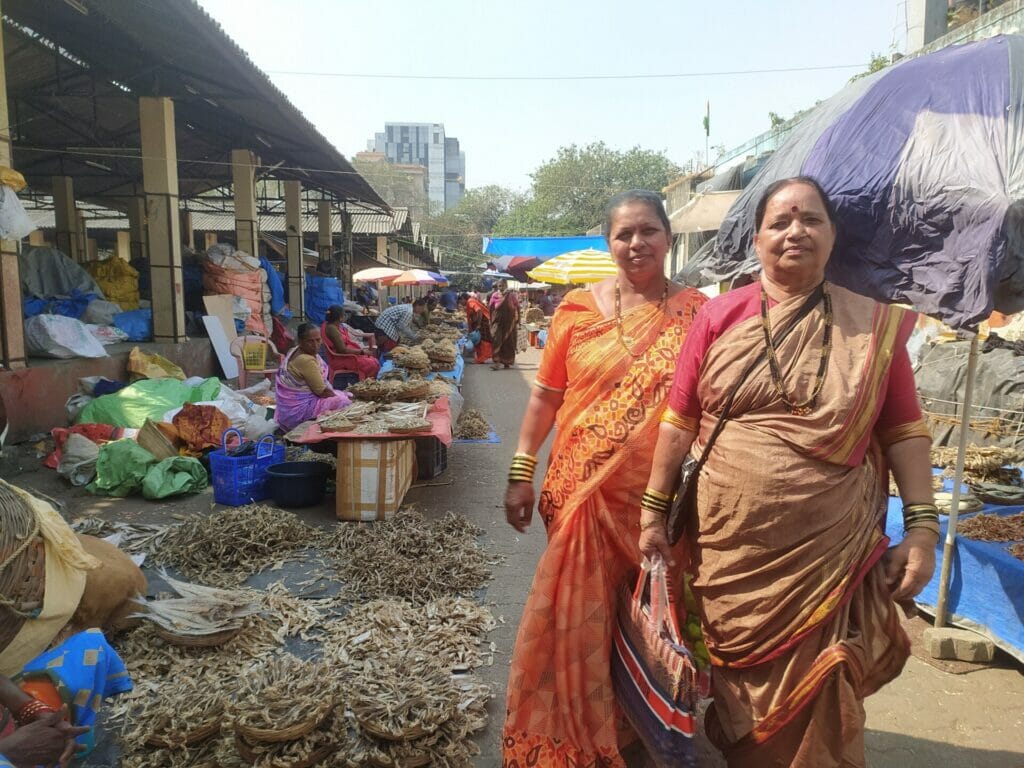
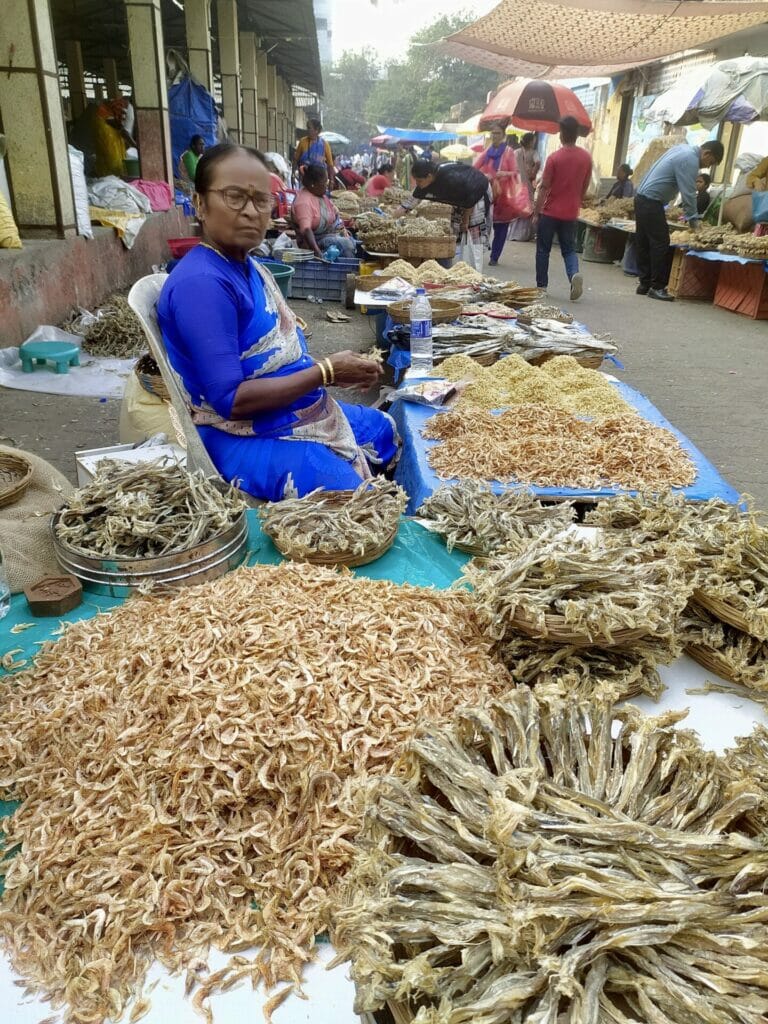
“We are in the process of granting licences only to 156 vendors, who have managed to submit receipts of market charges paid to us over the years. Others may have spent years vending in this market, but since they failed to submit the requisite documents, we cannot help it,” says Prakash Rasal. Despite being the original inhabitants of Mumbai, most fish vendors here are yet to receive BMC licences though they have been vending here for generations together.
Read more: Mumbai’s Kolis fight to (re)claim their home
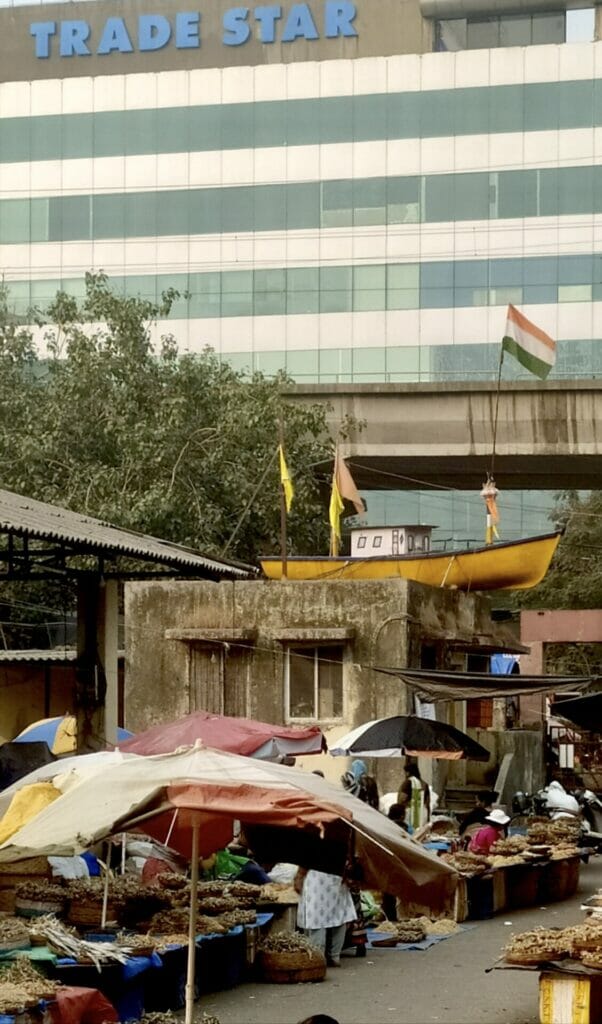
The structure of the dry fish market
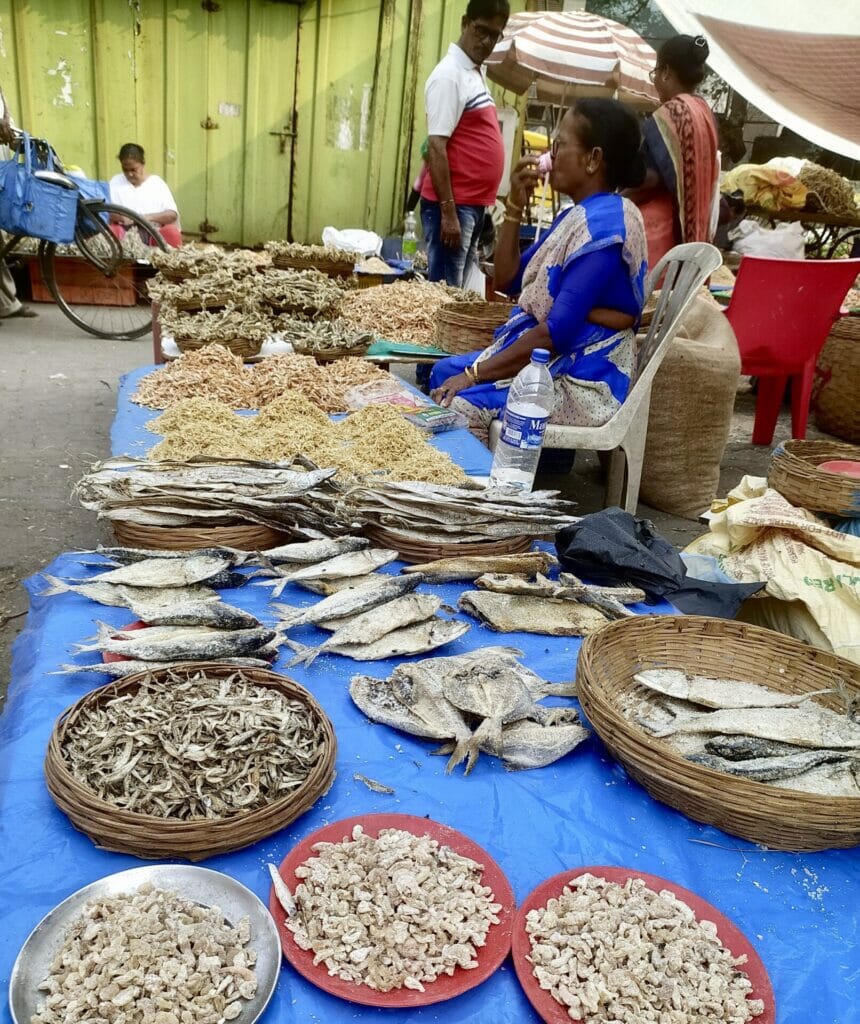
The dry fish market starts from Thursday morning and goes on for another two days till Saturday evening, when fish vendors from places like Uttan, Palghar, Madh, Versova also bring their own fishes here for selling. The spaces or pitches are allocated to fish vendors from specific areas for specific days (e.g. Versova fisherwomen sell only on Thursday and Saturday), with a mutual understanding among the members of the fishing community. The women now plan to start selling fresh fish on all days of the week to protect their turf.
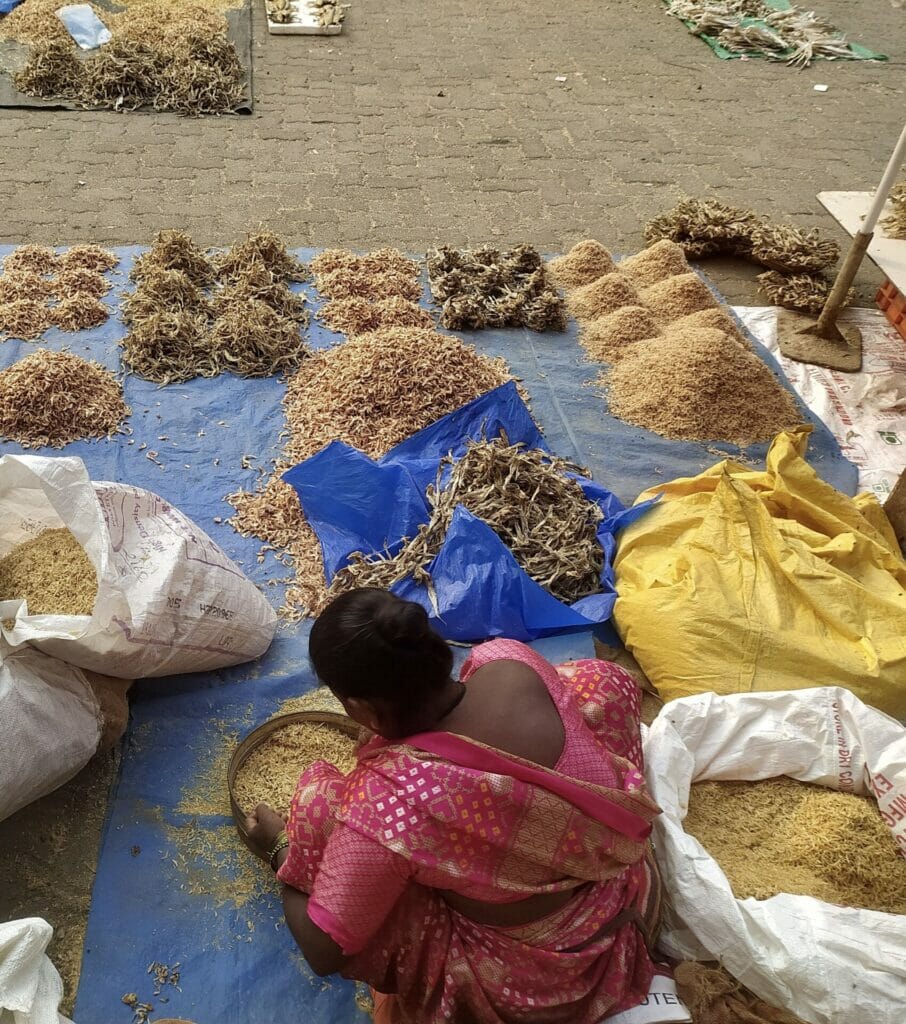
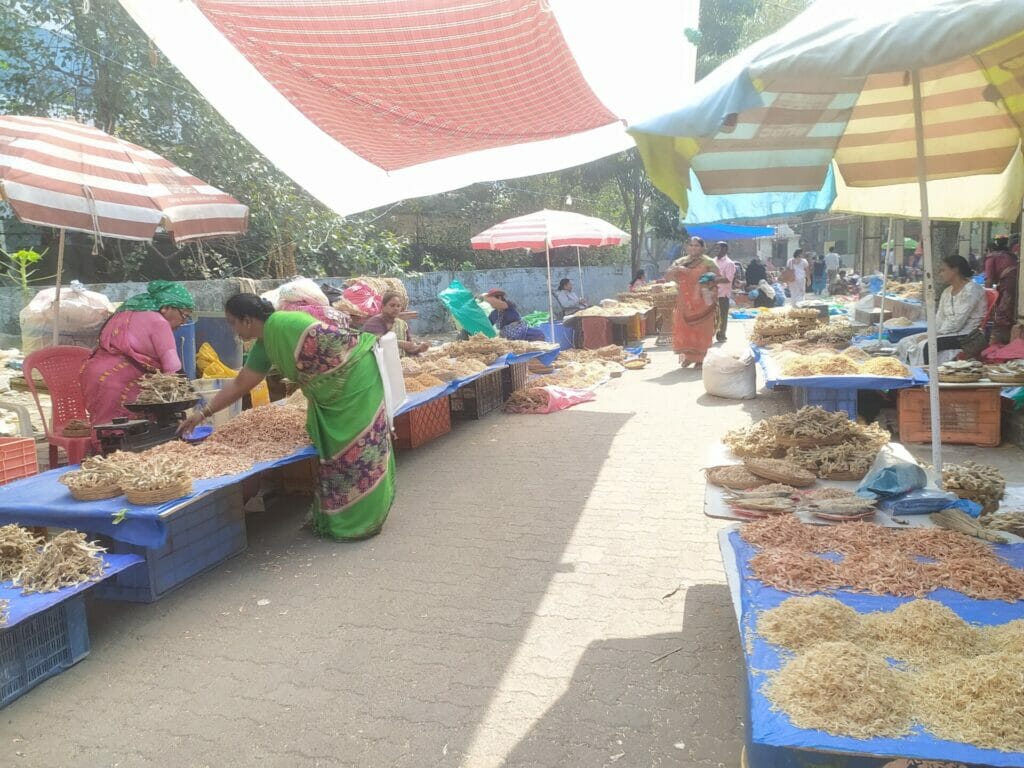
“It is much better to sit outside the platform to showcase the varieties of dry fish, rather than sit on the elevated platform, which lacks proper lighting and breeze and may not attract customers in there,” says Shilpa Kathin, a fisherwomen from Versova, who has been selling fish caught from her family-owned boat here, for over three decades. The concrete platform built by the BMC meant for selling is instead used for storing stocks of dry fish stored in wicker baskets or huge plastic bags. The women protect themselves from the harsh sun by putting up temporary cloth covers stringed to the market pillars or putting up umbrellas.
“At our weekly market, there are no proper facilities. We are forced to carry water bottles from home since the water facility set up here is defunct and not been repaired. We need security guards, CCTV’ cameras and lockers to prevent theft of our goods,” says Shilpa Kathin. Pic: Hepzi Anthony

“This market plot belonged long back to a private party, who handed it over to the BMC by inserting a clause that this market plot must be solely used only for the dry fishes. Considering this, the market should ideally be used for redevelopment as a building for the fishing community including spaces for fisherwomen to rest and relax since they come here to vend from far flung places,” feels Devendra Tandel, president of the All Maharashtra Fishermen’s Action Committee.
“Though they call us the original residents, Mumbai’s urbanisation has been pushing us out to the edge. Urban Mumbai seems to be closing in on every space we hold dear, be it the space where we dry fishes on the coasts or the markets where we sell,” says Rajhans Tapke, president of the Maharashtra chapter of the National Association of Fishermen.
Hey this is Tanvi I am an architecture student in my final year and i have the same site, marol dry fish market, as my thesis topic. I’d love it if you could share some more info from the research you did. Hoping to receive your reply soon.